Using the code from this answer, How to make dots in gganimate appear and not transition, as a MWE, say we have this gganimate:
library(ggplot2)
library(gganimate)
a <- ggplot(airquality, aes(Day, Temp,
group = interaction(Month, Day))) +
geom_point(color = 'red', size = 1) +
transition_time(Month) +
shadow_mark(colour = 'black', size = 0.75) +
enter_fade()
animate(a, nframes = 100)
or
animate(a, fps=5)
Is it possible to control the speed of each Month (time element)? For example, display Month 5 very quickly, ..., Month 9 very slowly.
